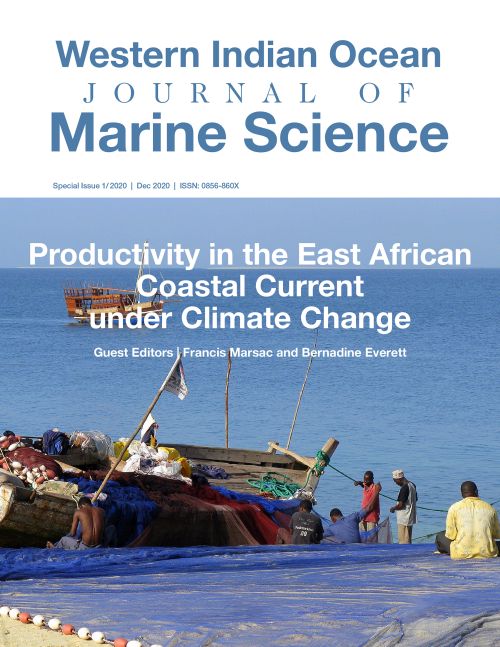Main Article Content
Factors influencing spatial patterns in primary productivity in Kenyan territorial waters
Abstract
This study was formulated to investigate productivity systems within Kenyan territorial waters. The interaction of processes on the margins of the marine waters, particularly the influx of fresh water loaded with sediments and nutrients, influences productivity of coastal waters. These deposited sediments, rich in nutrients, create a topographic barrier to the northerly flowing East African Coastal Current (EACC). Phosphate and nitrate peaks observed around the North Kenya Bank area provide evidence of an upwelling event. The contribution of sediments from the Lamu archipelago mangrove system is evident from the high observed particulate organic carbon (POC) input around the area. The system around the Lamu archipelago did not however show high chlorophyll-a levels despite the high POC influx. This may be due to the low levels of limiting phosphate in the surrounding waters, contrary to the observation further north in the region where high chlorophyll-a levels and corresponding higher phosphate levels were apparent. Productivity was largely supported by upwelling and organic matter mineralization. High levels of chlorophyll corresponded to high pelagic fish densities in the south (around 4.5°S) and north of the study area (around 2.5°S).






